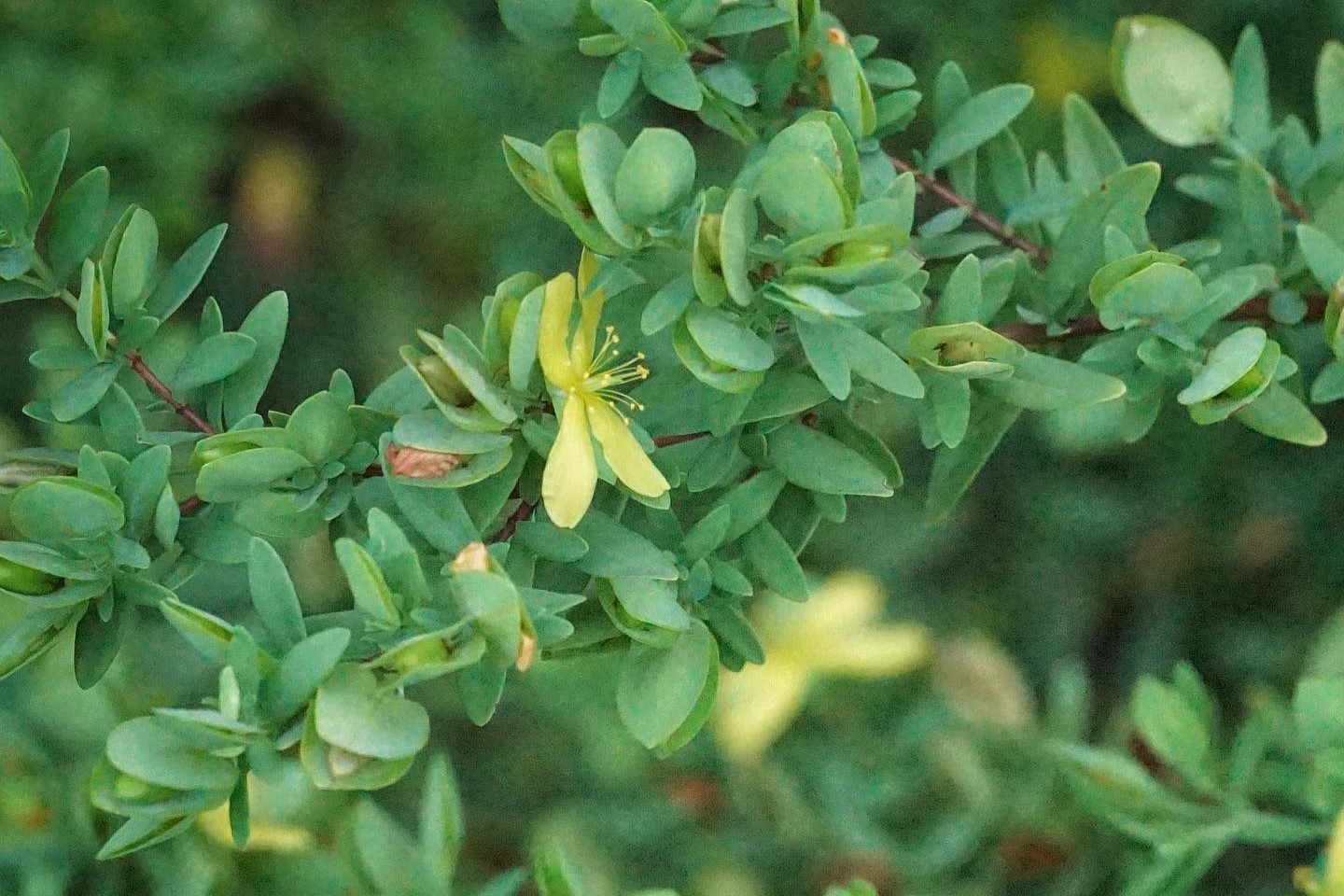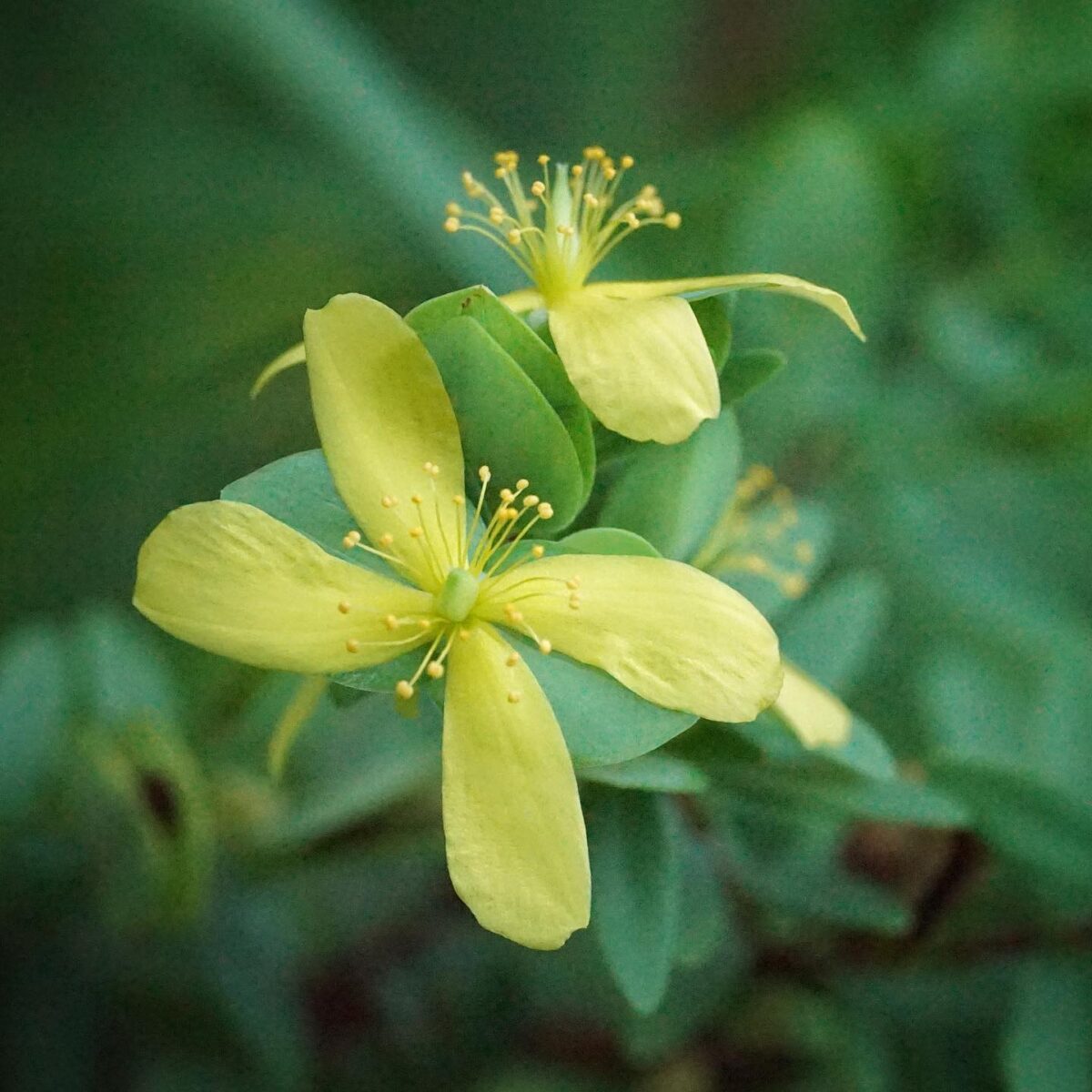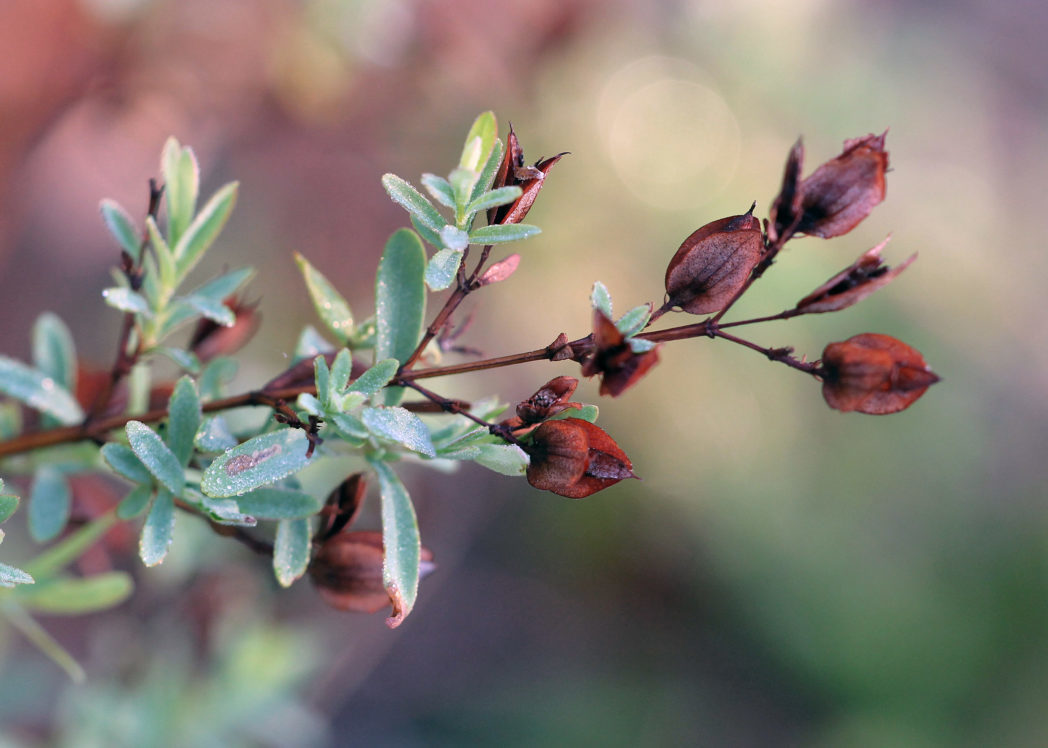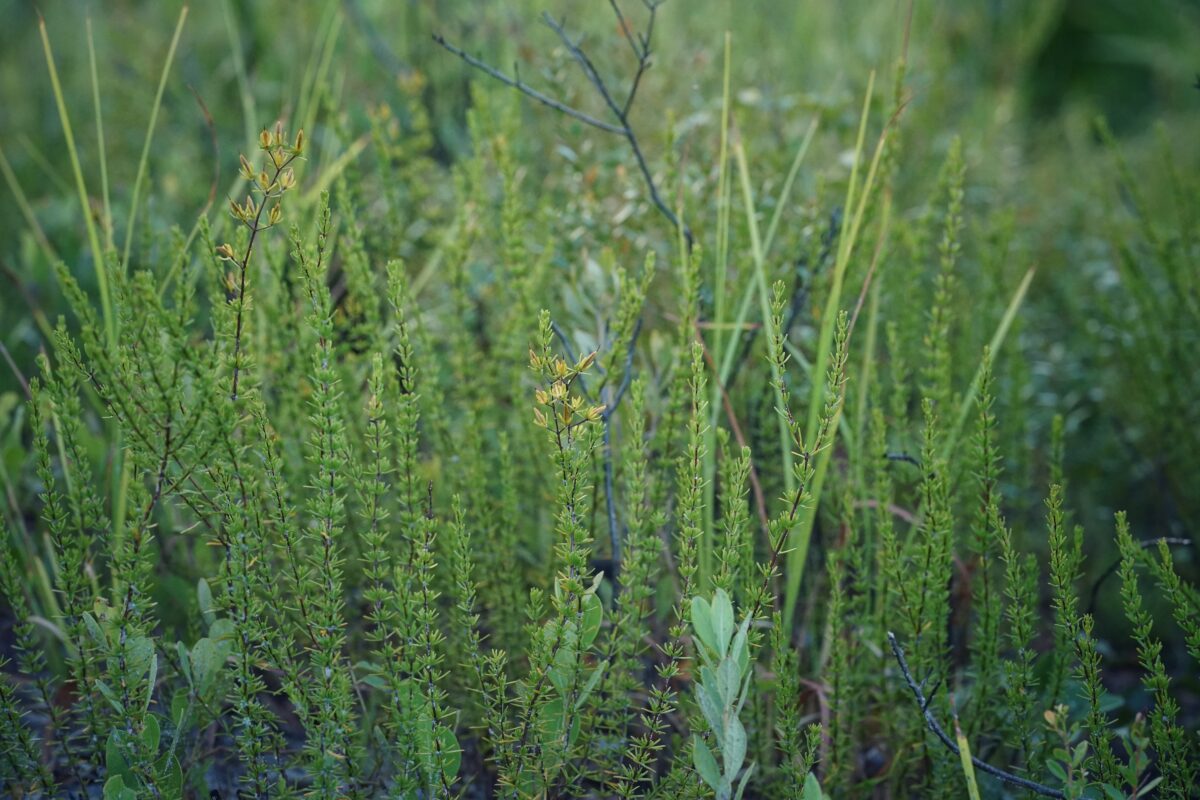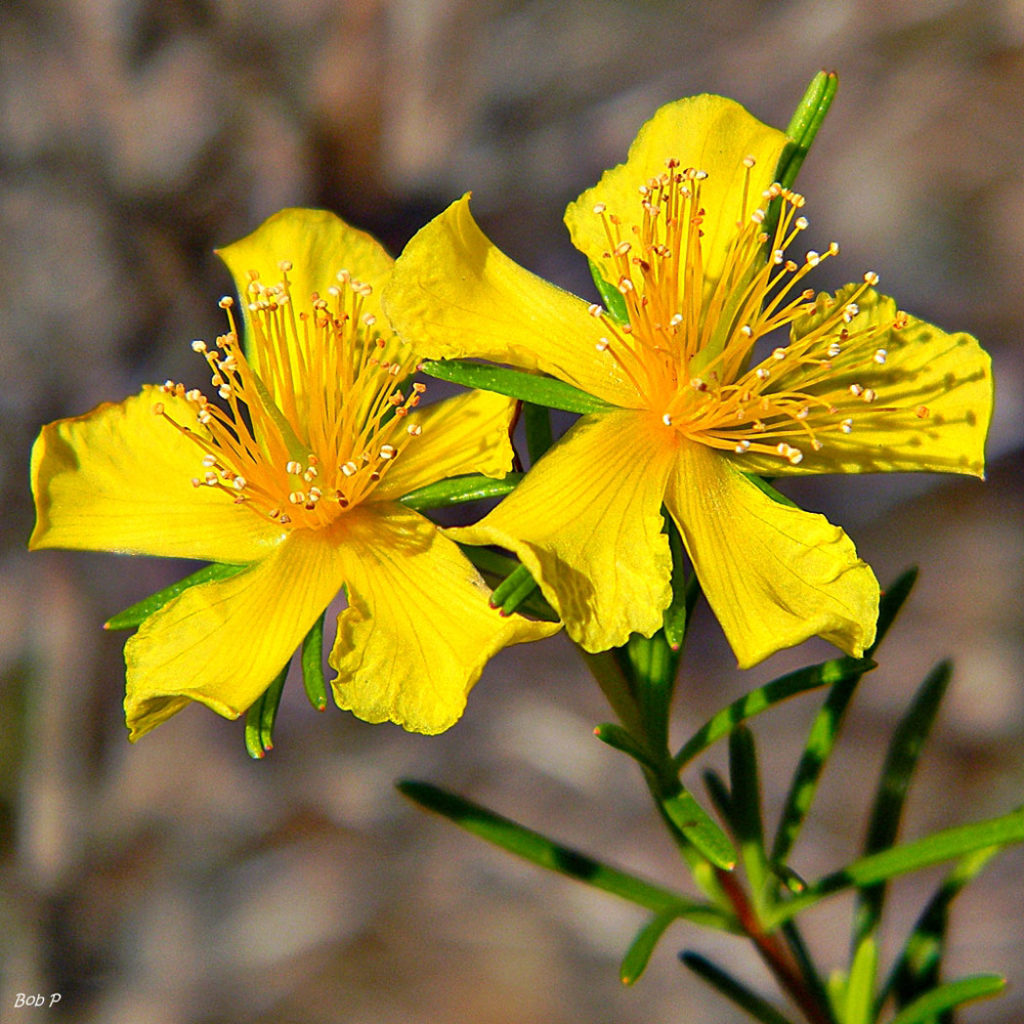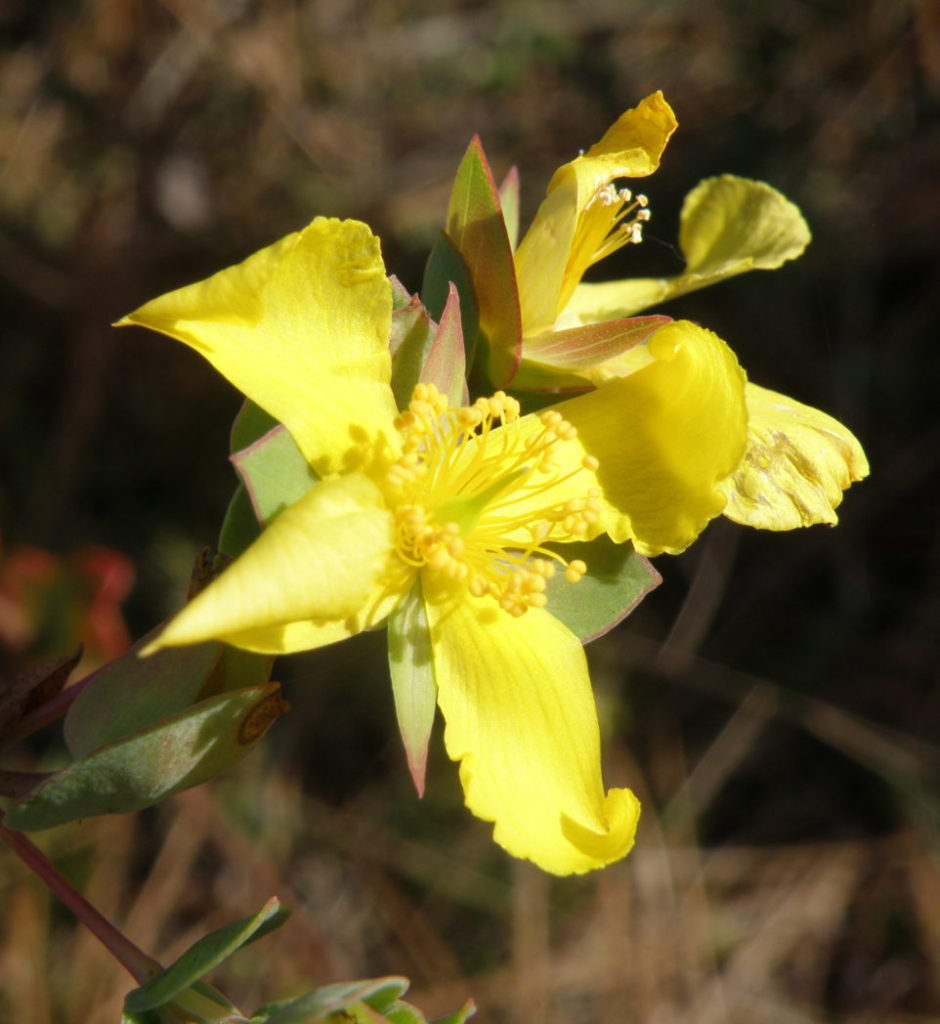St. Andrew’s cross
Pictured above: St. Andrew’s cross (Hypericum hypericoides) by Emily Bell. Click on terms for botanical definitions. View post as a PDF.
St. Andrew’s cross (Hypericum hypericoides)is an evergreen perennial shrub found in wet pine flatwoods, calcareous hammocks, floodplain forests and mixed woodlands throughout Florida. Bees and butterflies love its flowers while the foliage provides cover for birds and other small wildlife.
St. Andrew’s cross flowers are small (<1”) and creamy yellow with four narrow petals arranged in an “X.” They have many prominent yellow stamens. Flowers are borne in axils and have four unequal sepals. Leaves may be linear, elliptic or ovate. They are sessile and oppositely arranged. Stems are branched and reddish-brown. Fruits are ovoid capsules.
Some taxonomists place the Hypericum genus in the Clusiaceae family, of which they consider Hypericaceae to be a subfamily (Hypericoideae). The common name refers to St. Andrew, the patron saint of Scotland, who is said to have been martyred by crucifixion on an x-shaped cross.
Family: Hypericaceae (St. John’s wort family)
Native range: Nearly throughout
To see where natural populations of St. Andrew’s cross have been vouchered, visit florida.plantatlas.usf.edu.
Lifespan: Perennial
Soil: Wet to moderately dry well-drained or calcareous soils
Exposure: Full sun to partial shade
Growth habit: 1–3’+ tall
Propagation: Seed
Florida regions of landscape suitability: North, Central, South
Garden tips: Although flowers are small and not as showy as other Hypericum species, its three-season (sometimes year-round) blooms, attractive evergreen foliage and high adaptability to a variety of conditions makes St. Andrew’s cross a perfect addition to any home landscape.
Caution: The St. John’s wort that is promoted as a supplement for use in treating depression is a non-native species. According to Dan Austin in his book, Florida Ethnobotany, using native St. John’s wort can lead to dermatitis or photosensitization due to a hypericin compound found in the plants.
St. Andrew’s cross is occasionally available from nurseries that specialize in Florida native plants. Visit www.plantrealflorida.org to find a nursery in your area.
Learn more about St. Andrew’s cross from the Florida Native Plant Society and the Institute for Regional Conservation.
For information on other Hypericum species, see these resources:

